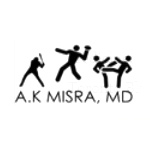Health Tips brought to you by U.S. HealthWorks Medical Group. Our experienced medical experts provide information here that we hope will broaden your health care knowledge.
Today we talk with Dr. A.K. Misra, medical director for U.S. HealthWorks in South San Francisco, about how something many of us use and take for granted needs to be utilized carefully – Q-Tips. Dr. Misra is double-board certified in Sports Medicine and Internal Medicine.
Q: I often hear that people need to be very careful when using Q-tips (cotton swabs) and should never go into the ear canal without the direction of a medical professional. Can you explain the dangers?
A: We see several types of problems on a regular basis that are otherwise preventable by avoiding ear canal instrumentation using cotton swabs. Using cotton swabs in the ear canal is dangerous.
Below is a short list of the most common ailments I come across:
- Impacted cerumen (earwax)
- Ear canal trauma (scratches, bleeding)
- Tympanic membrane (ear drum) rupture
Any time the epithelium (skin lining) is injured and traumatized, it can be the focal point of a new infection. Also, I often see patients who believe they have an ear infection. However, what they frequently have is pain from impacted earwax. This is why a clinical evaluation is pivotal when sorting out ear pain.
Q: What’s the best method to clean my ears?
A: We are supposed to have some wax in our ear canals to keep dust and other things away from the ear drum, such as insects and the like. Our ear canals are located directly above our temporomandibular (jaw) joint so the very act of chewing or moving the jaw for any reason (talking, yawning, etc.) results in the dry wax ultimately breaking apart. It also comes out naturally when coupled with regular showers. One may use a cotton swab to clean the external ear (pinna), but never try to clean the ear canal.
Q: What can I do if I have impacted earwax, especially if it is painful, uncomfortable, and resulting in impaired hearing?
A: There are over-the-counter products that have simple instructions and can be quite helpful. However, if the products are not working well, it might be time to seek the care of an ear, nose, and throat doctor – otolaryngologist. The doctor can examine you and do a specialized procedure to remove the wax.
Often in our urgent care practice at U.S. HealthWorks, we can provide treatment. However, for advanced cases, U.S. HealthWorks does refer to local otolaryngologists, deferring to their expertise.
Because the ear canal is a sensitive area that causes pain, discomfort, and occasional dizziness during conventional procedures to remove impacted earwax, sometimes we need a specialist to help with particularly challenging cases.
Photos courtesy of Jeff Turner (featured photo) and Nic McPhee via @Flickr.








